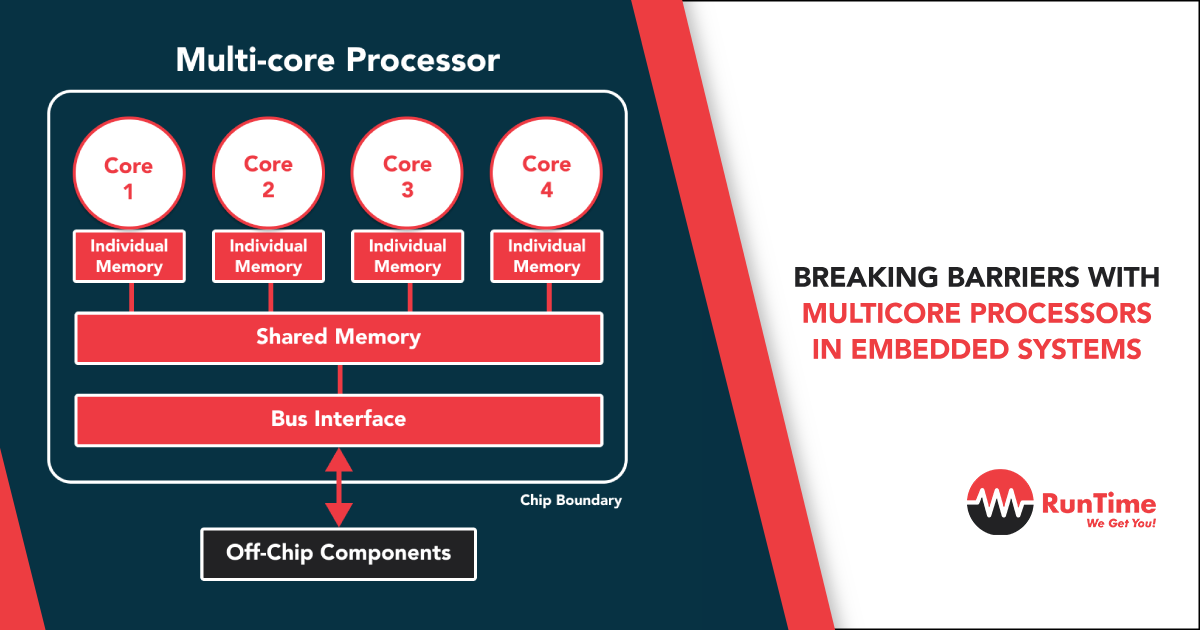In the realm of embedded systems, progress often demands a delicate balance between size, power consumption, performance, and cost. One of the most exciting advancements in recent years that has significantly disrupted this delicate equation is the advent of multicore processors. The integration of multicore processors into embedded systems is not merely a trend; it represents a quantum leap in the design and performance of these systems.
Multicore Processors: An Overview
In essence, multicore processors consist of multiple processing units, or ‘cores,’ on a single integrated circuit (IC). This structure facilitates parallel computing, which enhances performance while potentially reducing power consumption. This concurrent execution of tasks is particularly valuable in environments that demand high throughput and real-time responses, qualities that are often essential in embedded systems.
The Need for Multicore in Embedded Systems
Embedded systems are ubiquitous in our modern lives, found in everything from smart home appliances to sophisticated avionics systems. As these systems become increasingly complex and versatile, the demands on the processor intensify. The need for higher performance, faster response times, increased functionality, and energy efficiency has never been more pressing.
This requirement for improved performance, coupled with power and thermal constraints, has made single-core processors insufficient for many modern embedded systems. Single cores are hitting a performance wall, primarily due to limitations in clock frequency scaling as a result of power and thermal issues. Multicore processors circumvent these issues, allowing for enhanced performance without a proportional increase in power consumption or heat dissipation.
Multicore Processors Breaking Barriers
Performance Enhancement
One of the key advantages of multicore processors is their ability to significantly enhance the performance of embedded systems. By breaking down tasks into separate threads that can be executed simultaneously on different cores, multicore processors enable concurrent processing. This concurrent processing can result in a significant performance boost, particularly for tasks that can be effectively parallelized.
Energy Efficiency
Multicore processors also excel in energy efficiency, a critical parameter for many embedded systems, particularly those powered by batteries. The energy efficiency of multicore processors stems from their ability to deliver higher performance without a proportional increase in power consumption. This is because multicore processors can operate at lower clock frequencies while still achieving the same performance level as a high-frequency single-core processor, thereby reducing the power demand.
Real-Time Performance
In many embedded systems applications, such as robotics, avionics, and driver-assistance systems, real-time responses are crucial. Multicore processors enhance real-time performance by allowing multiple tasks to execute concurrently on different cores. This concurrent execution eliminates the need for time-consuming task switching, which can lead to delays and jitter.
Challenges and Solutions in Multicore Embedded Systems Development
Despite their numerous advantages, multicore processors also present unique challenges, particularly in the areas of software development and system integration.

Parallel Programming and Task Synchronization
Developing software for multicore processors requires a fundamental shift in approach, moving from sequential to parallel programming. This shift involves the creation and management of multiple threads and the synchronization of tasks, which can be a complex undertaking. However, the introduction of parallel programming languages and tools has significantly streamlined this process.
Resource Sharing and Inter-Core Communication
Another challenge is resource sharing and inter-core communication. In multicore systems, cores may need to share memory and other resources, requiring effective management to prevent conflicts and ensure data integrity. Solutions to this issue include the development of multicore operating systems and the implementation of hardware mechanisms for resource sharing and inter-core communication.
Heat Dissipation
While multicore processors are more energy-efficient than their single-core counterparts, they can still generate considerable heat, particularly in high-performance applications. This heat must be effectively managed to prevent thermal throttling and maintain system reliability. Solutions to this challenge include advanced cooling systems, thermal management techniques at the system and chip levels, and the development of low-power multicore designs.
Summary
The advent of multicore processors has undoubtedly disrupted the landscape of embedded systems development. These processors are breaking barriers in performance, energy efficiency, and real-time responsiveness, fundamentally redefining what embedded systems are capable of. While the integration of multicore processors into embedded systems presents challenges, solutions are continually being developed, ensuring that the advantages of multicore technology will continue to propel the evolution of embedded systems into the future. The proliferation of multicore processors in embedded systems represents not just an incremental improvement, but a paradigm shift that is enabling a new era of more powerful, versatile, and efficient embedded systems.









